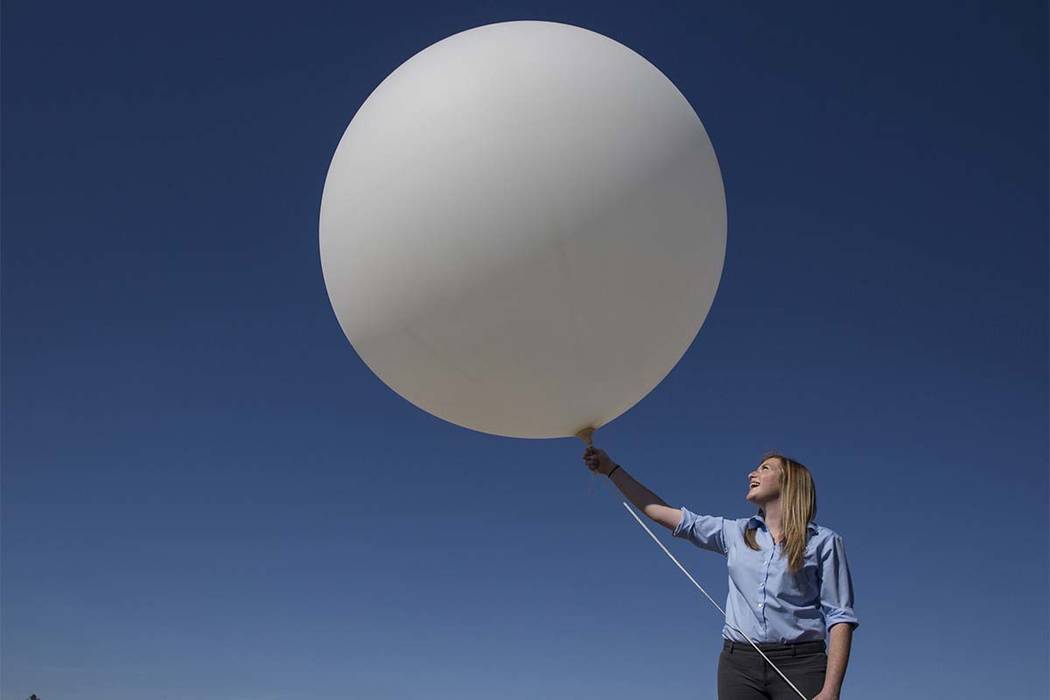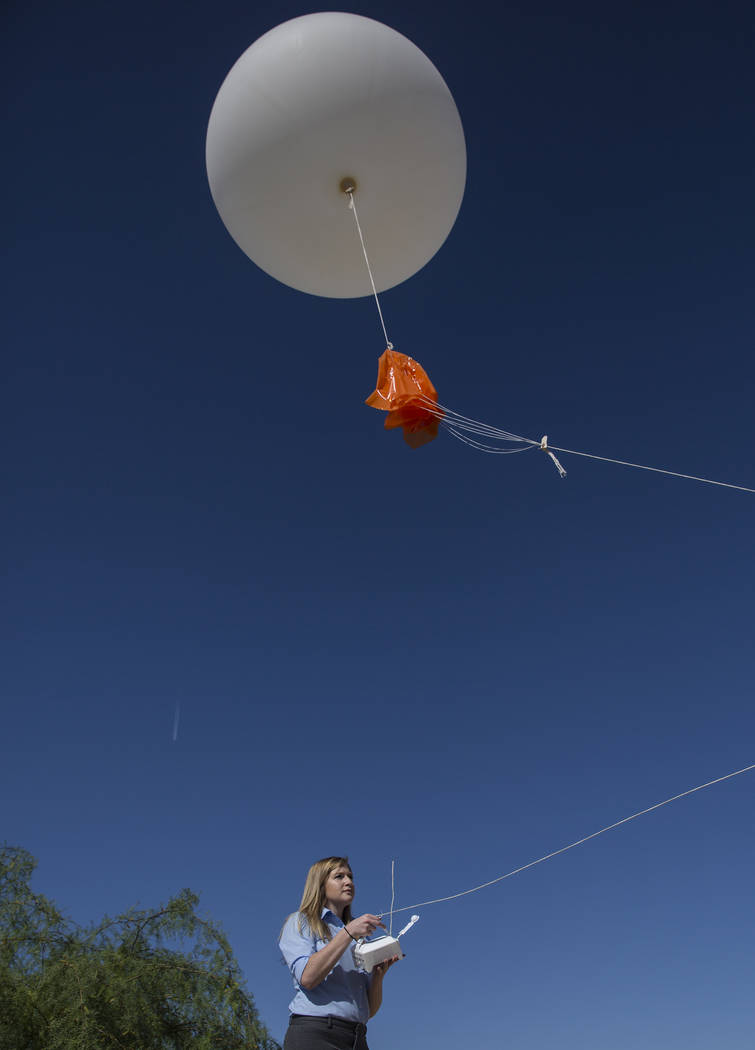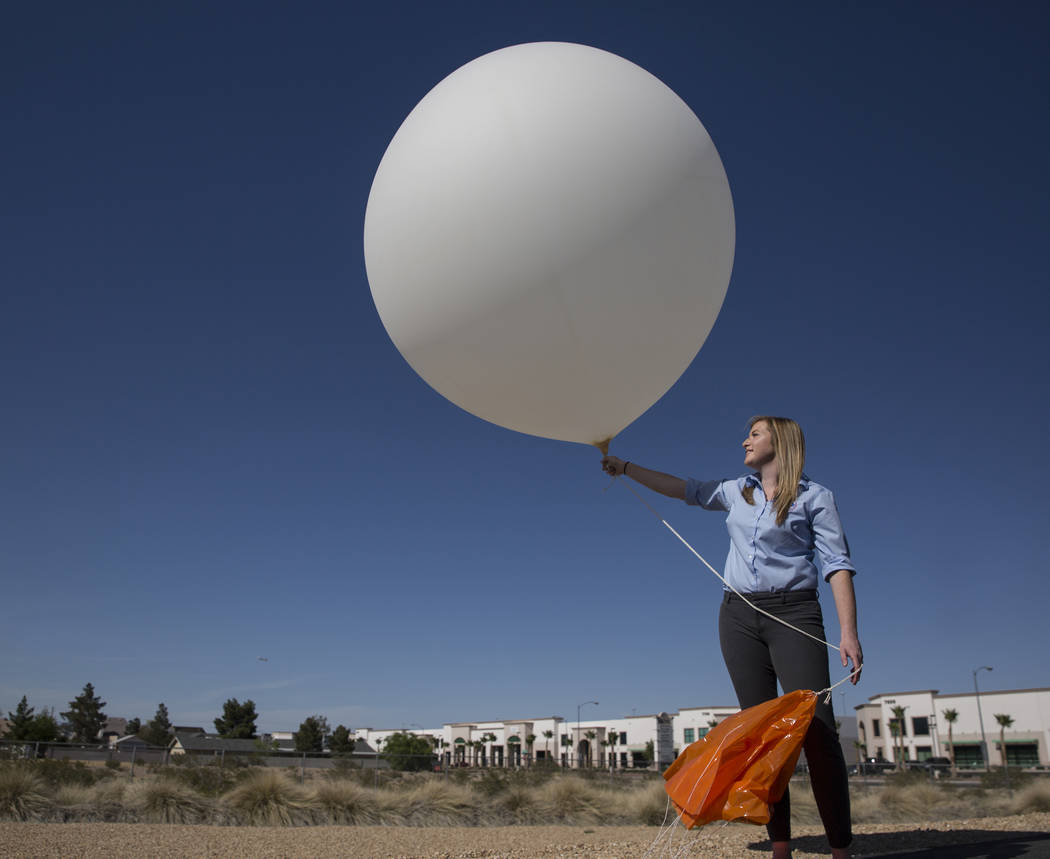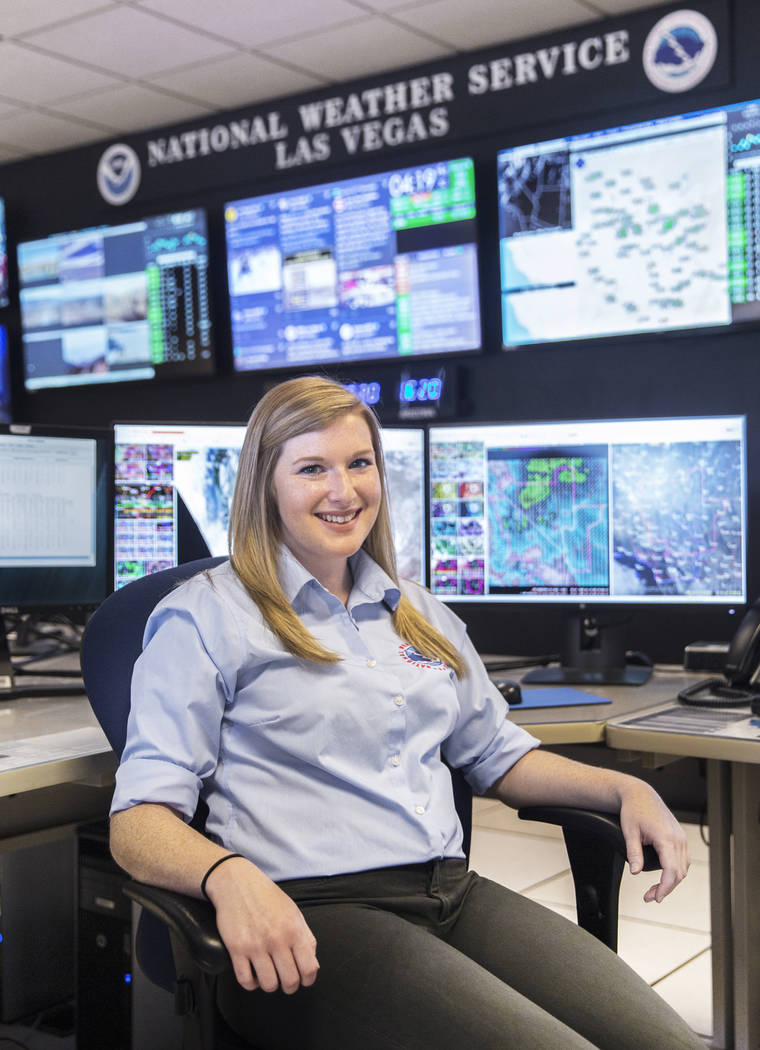Las Vegas weather forecasting not full of hot air, but helium





Here’s an uplifting story about where our weather forecasts come from.
Every day at 4 a.m. and 4 p.m., a staff member steps outside the National Weather Service’s Las Vegas office on Dean Martin Drive and launches a weather balloon.
The helium-filled latex balloon gradually rises more than 100,000 feet while towing instruments that measure temperature, humidity and air pressure.
The decades-old practice provides a vertical snapshot of the atmosphere that meteorologists can’t get from weather instruments on the ground.
“This data is actually really useful for forecasting,” said local weather service meteorologist Chelsea Kryston.
Flights generally last about 90 minutes and end when the expanding balloon finally bursts from the internal pressure roughly 20 miles above the ground.
At launch, the biodegradable balloon is about 6 feet in diameter. By the time it pops, it’s “about the size of a small house,” Kryston said.
On an especially clear, calm day, you might be able to see the balloon explode in the upper stratosphere.
“I’ve seen it before,” said John Adair, a senior forecaster for the weather service in Las Vegas. “All you see is a small, white speck, and then it just disappears.”
Launches coordinated worldwide
Las Vegas is one of 93 sites across the U.S. — and hundreds worldwide — that release weather balloons at the same time twice a day. When the clocks change here for daylight saving time, so do the balloon launches, which shift to 3 a.m. and 3 p.m.
Meteorologists use the combined data from the balloons to determine the “state of the atmosphere” and predict what will happen next across the continent and around the globe.
Each launch costs about $120, including the price of the balloon, the helium inside it and the instrument package known as a radiosonde.
Kryston said most weather service offices fill their balloons with hydrogen, which is cheaper than helium but also flammable, requiring a special shelter and other safety features the Las Vegas office does not have.
She figures she has launched a couple of hundred weather balloons during her year in Las Vegas and the four years she spent as a volunteer with the weather service in the Tampa Bay area of Florida.
Kryston had to become certified before she launched her first balloon, a process that involved her reading through a thousand-page manual and then passing a test.
Now she said she can get through the whole launch protocol in as little as 20 minutes, including the seven to 10 minutes its takes to fill the balloon.
Balloons fly rain or shine
First she has to calibrate the radiosonde and make sure the equipment at the office has a lock on its signal.
Then she heads outside to inflate the balloon and attach the radiosonde and its parachute using standard knots and about 60 feet of twine.
Just before release, Kryston picks up a red phone mounted to the helium filling station to get clearance from the control tower at McCarran.
The weather service office sits directly beneath one of the approach routes to the airport about two miles from the runways.
“We don’t want to surprise anyone,” Kryston said.
The service has been launching weather balloons from its Las Vegas office since 2009. Before that, the balloons went up from an airstrip near the Mercury entrance to the Nevada National Security Site, about 65 miles northwest of Las Vegas.
Kryston said the twice-daily releases take place regardless of the weather, though a powerful thunderstorm directly overhead might delay a launch by as much as 90 minutes.
Strong, ground-level winds can also complicate things, she said.
“Sometimes, when it’s really windy, you need two people to hold on to the balloon,” she said. “It’s actually hit me in the head a few times.”
Contact Henry Brean at hbrean@reviewjournal.com or 702-383-0350. Follow @RefriedBrean on Twitter.
Return to sender
Though weather balloons don’t survive their flights into the upper stratosphere, their instrument packages often do.
It usually takes one of the packages 20 to 30 minutes to drift back down to the ground after its balloon pops roughly 20 miles above the ground.
Each package, known as a radiosonde, has its own bright orange parachute to slow it down during its long descent “so it doesn’t knock anyone out,” said Chelsea Kryston, a meteorologist with the National Weather Service in Las Vegas.
The cardboard and foam package is a little smaller than a shoebox and comes printed with words “harmless weather instrument.” It also comes with its own prepaid postage and packaging so anyone who finds one can mail it back.
Roughly a third of the radiosondes launched nationwide are recovered this way, but the percentage is much lower here because of all the empty desert surrounding the city.
The last time the local weather office got one back was in April. “Someone found it floating in Lake Mead” near Temple Bar, Arizona, Kryston said.
A few months earlier, a man on a motorcycle pulled up to the office in the middle of the night to drop off a radiosonde he had found.
The recovered weather instruments are sent to a central clearinghouse in Kansas City, Missouri, to be stripped for parts or refurbished and used again.













